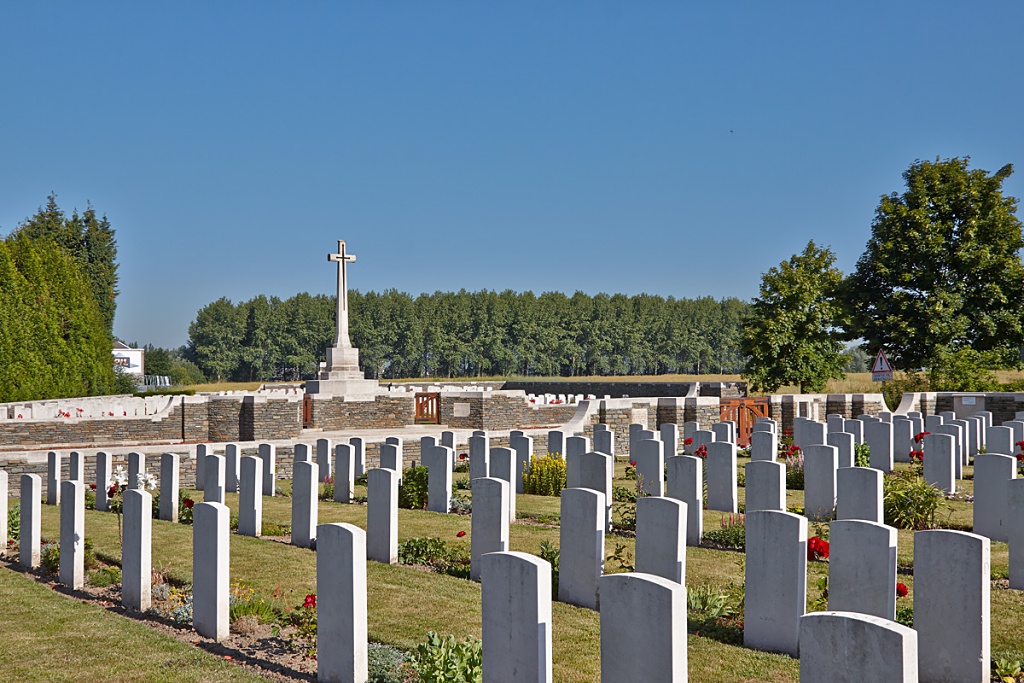Herbert Asquith
Date of birth: 1894
Date of death: 24.5.1915
Area: Wrenthorpe
Regiment: King’s Own Yorkshire Light Infantry
Family information: Son of George and Maria Asquith
Rank: Private
Service number: 2108
War Service
At the beginning of August 1914, the 4th KOYLI was at summer camp, however with war imminent, the battalion returned to Wakefield for mobilisation. On 10th August, the 4th Battalion, later to be renamed the 1/4th Battalion, moved by train to Doncaster and proceeded to the racecourse, where the 1st West Riding Division was assembled. They later moved to Sandbeck Park and to Gainsborough, from where they had a short spell of coastal defence work. On 26th February the battalion moved to York, where they stayed until proceeding overseas, to join the British Expeditionary Force.
On the 13th April 1915, Private Asquith, left York Station by train with his battalion, the 1/4th KOYLI, bound for Folkestone, where ships were boarded for passage to Boulogne. The battalion transports proceeded via Southampton, to Le Havre. On the 14th April, after linking up with the transports, both the 1/4th and 1/5th battalions moved from Merville to Doulieu. In this area the Brigade received two weeks trench warfare familiarisation training, before being deployed in the Bois Grenier sector. On 28th April, the 1/4th KOYLI entered the line near Fleurbaix and shortly afterwards, the 1st West Riding Brigade was designated 148th Infantry Brigade, 49th (West Riding) Division.
On the 20th May 1915, orders were received for the brigade to advance the front line near Touquet, within the Bois Grenier sector. This new line was to include two ruined houses on the Bois Grenier-Bridoux road. On the night of Friday 21st May, a reconnaissance party was deployed in “No Mans Land”, to locate the snipers thought to be active near ruined houses and to mark the line of the new trench. On the following night, “A” and “C” Coys. 1/4th KOYLI commenced to dig the new trench line, about 70 yards in advance of their existing line. Machine-gun and rifle fire harassed the two companies throughout, with 5 other ranks killed and 10 wounded. On arriving at the new trench on the night of 23rd May, the battalion found the sandbagged parapet had been turned and the trench occupied by Germans. After a brief skirmish the enemy withdrew, but continued to harass the 1/4th Battalion throughout the night. The enemy was eventually forced to withdraw and work continued on the new trench until dawn, by which time it was almost finished.
During the afternoon of 24th May, the artillery from both sides was active shelling their opposing lines. Later, at 20.50 hrs, “B” and “D” Coys. 1/4th KOYLI went over the top and occupied the new front line trench, without incurring any casualties. Prior to being relieved at 07.00 hrs. on 25th May, the 1/4th had driven the enemy out of the ruined houses and consolidated the position. During the next two days, the enemy intensified their bombardment of the KOYLI positions, causing many casualties.
Private Herbert Asquith received his wounds on 23rd May. He was carried back to his own lines under fire, by two of his comrades, Private’s Bradley and Aveyard. However he succumbed to his wounds and died on 24th May, the day before his twenty first birthday.
Private Asquith is buried at Sailly-sur-la-Lys Canadian Cemetery, about 7 km. west of Armentieres, France. The cemetery now contains 313 Commonwealth graves and one German grave, from the First World War. His name is also remembered on the Wrenthorpe Colliery Memorial, at St John’s Church, Bradford Road, Wakefield.
Family Life
Herbert Asquith was born at Wrenthorpe, on 25th May 1894, the eldest son of George Asquith, a coal miner and his wife Maria, formerly Firth. He was baptised at the Methodist Chapel on July 1st of that year. The family lived at Springfield Terrace, Bradford Road.
In 1901 the family was living at Newstead Lane, Outwood with Herbert the eldest of the family aged 6. They also had his brothers Albert aged 5, Oliver aged 3 and sister Ethel aged 1. His father George was a 33-year-old deputy in the coal mine.
By 1911 they had moved to 3, Springfield View, Wrenthorpe and George was now a colliery haulage man below ground. All three of his sons now worked in the mine as colliery haulage boys – Oliver was only 13. Youngest daughter Ethel was still at school. The census reveals that Maria had only had those four children in their 17-year marriage. Sadly Maria died later in 1911, being buried in Alverthorpe Churchyard on 9th September aged just 44.
Herbert Asquith was a Methodist, and attended Lofthouse Gate Primitive Methodist Church, where he was a Sunday school teacher, a member of the choir and member of the Brotherhood. Herbert worked at Wrenthorpe Colliery and was also a member of the Wakefield Territorials, the 4th Kings Own Yorkshire Light Infantry.
 Sailly-sur-la-Lys Canadian Cemetery
Sailly-sur-la-Lys Canadian Cemetery

